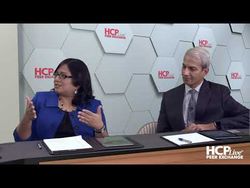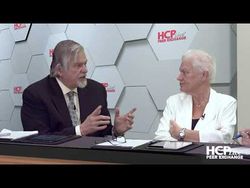Management of Beta Thalassemia - Episode 7
Understanding Transfusion for Beta Thalassemia
Thomas D. Coates, MD: What I could say to this is at our center, we are very aggressive with transfusions. And if I have patients with hemoglobin of 8.5 g/dL and beta-thalassemia intermediate, especially the ones with hemoglobin in a range where they can function, I’m going to say 8.5 to 10 g/dL, maybe 10 can make it without transfusion. These are the most difficult patients to manage. These are the patients where you want to talk to your colleagues and your colleagues have much more; we have experience in Los Angeles because we’ve got a couple thousand patients. But in Italy and Greece, you know, I always remember a meeting I was at. Someone said, “Well, how many patients do you have?” And I said, “Well, I have 150. How many do you have?” “Oh, I have 5000.” That’s our experience in this, but anything in medicine is clinical experience. How many have you seen? And so the beta-thalassemia patients are the hardest individuals because you really need this clinical experience.
We start transfusing now. We have many patients that we put on transfusions with hemoglobin of 8 g/dL. And what’s striking to us is these kids, these children do, clinically, so much better. And they don’t get the ineffective erythropoiesis; they don’t have the bone changes. I can remember so many times looking at serial photographs at Christmas trying to decide if bone changes are happening. These are very difficult; these patients really must be seen by somebody who has seen a lot of these things.
Sujit Sheth, MD: In the past we might have been more reluctant to be aggressive with transfusions because of the HIV, because of the ineffective chelation regimens that we have. Now we don’t worry about that so much. We are far more aggressive in terms of transfusing them and maintaining normal growth, normal development, normal activity levels. They go to school. They do all these things just fine.
Peter L. Salgo, MD: It depends. If your hemoglobin is happy and you can stretch out the transfusion—OK, tell me, so supposing I’ve got somebody with a hemoglobin of 9 g/dL.
Farzana Sayani, MD: Well, even though their hemoglobin is 9 g/dL and they can function, there is still underlying ineffective erythropoiesis and damage that is going on that will catch up to them over time. They want to stop that.
Peter L. Salgo, MD: Let me put it this way: where would you not transfuse somebody?
Maria Domenica-Cappellini, MD: What is driving the decision of transfusion? I should say that it is not the level of hemoglobin but the clinical behavior of the patients, which means if a child is not growing well or has problems playing or going to school compared with his or her peers. With all this, the bone changes are appearing. So why are we waiting to have adult nontransfusion-dependent patients with all the consequences she mentioned? I conclude by saying that here there would need to be a way on to determine how ineffective erythropoiesis is playing a role.
Sujit Sheth, MD: The hemoglobin level can be maintained but at a cost. If you have a hemoglobin of 9 g/dL but your marrow is working really, really hard and you have extramedullary hematopoiesis, that’s somebody who needs transfusion. But if you are 9 g/dL and you have no hepatosplenomegaly and you have a very minimal amount of ineffective erythropoiesis, you may be able to get by without transfusion.
Peter L. Salgo, MD: So the marker is—again, you’ll forgive me—not the hemoglobin.
Thomas D. Coates, MD: The problem is that when you see these changes, you see the bone changes, you see the big liver in them, that tells you that this process has been going on for a long time. And so, again, we come back to this point of trying to suppress the marrow activity. The decision is: do you need to be on transfusions chronically, yes or no? If the answer is yes, then we put you on regular transfusions every 3 weeks or every 4 weeks.
Peter L. Salgo, MD: I get it. So it doesn’t depend on the hemoglobin level. It depends on the clinical presence.
Thomas D. Coates, MD: Whenever the hemoglobin is dropping below this level, the marrow is turning back on again.
Maria Domenica-Cappellini, MD: But is the bone marrow of thalassemia? Because I ask you a question: if you have a woman with 8 g of hemoglobin, just because she has no iron—she is iron deficient—are you going to transfuse her?
Peter L. Salgo, MD: Probably not.
Maria Domenica-Cappellini, MD: No.
Peter L. Salgo, MD: Depending what are her comorbidities are.
Maria Domenica-Cappellini, MD: You are giving iron because her bone marrow is not effective. She doesn’t have iron to produce hemoglobin. It is a different mechanism of pathophysiological mechanism.
Thomas D. Coates, MD: One thing I feel compelled to bring up, and that’s—you know, we showed a year or 2 ago that the brain white matter volume is literally and virtually correlated to the hemoglobin. If you’re anemic, I think that we know that the thalassemia intermediate patients, for example, have a higher risk, a higher incidence of silent stroke. And so globally we’re going to have to rethink these anemia standards because anemia itself is not good. I personally don’t think it’s OK to have a hemoglobin level of 8 g/dL, even if it’s from iron deficiency.
Transcript edited for clarity.



